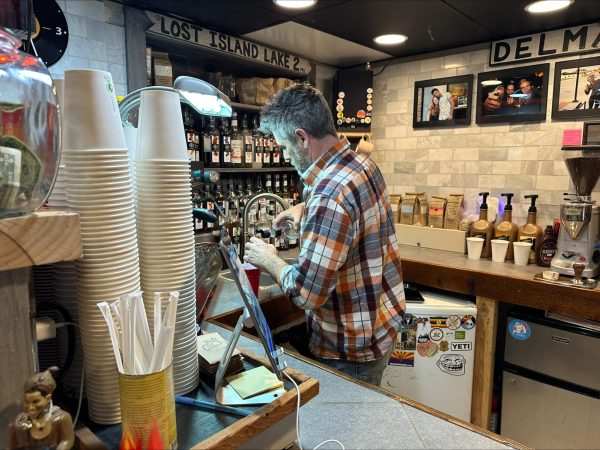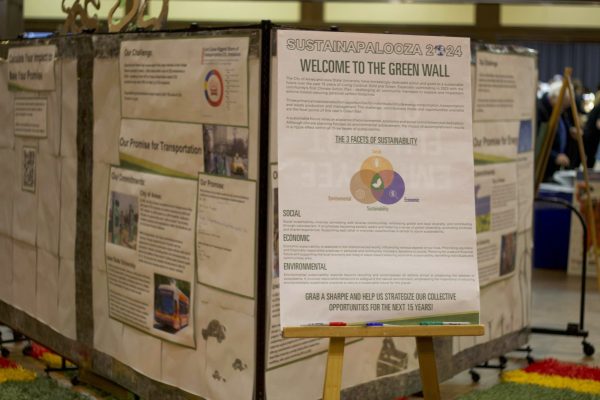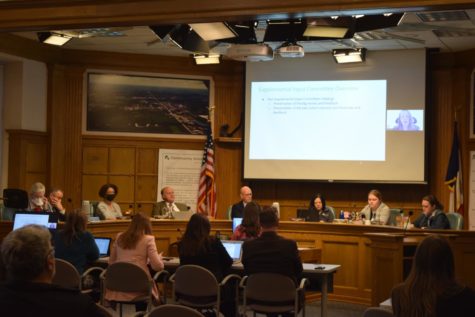CydeWinder competes in tractor-pull competition
June 9, 2010
Amid the fury of competition, Travis Koster looked on as the tractor he and his team took a year to build slowly fell to pieces.
“Two of the computers completely burned out,” Koster said. “It was pretty much over after that.”
Koster and his team, the Cyclone Power Pullers, traveled to Peoria, Ill. last weekend to compete in a quarter-scale tractor competition. The team has been in the competition since 1998, and has fared well through the years.
This year, instead of improving on an old design, the team built something completely new: the CydeWinder.
“We used 5 ECUs, or computers, to control the tractor,” Koster said. “We were the only team at the competition to use a CAN-bus system.”
A controller-area network system, like the one used on the CydeWinder, is designed to enable different devices in a vehicle to communicate with each other without the presence of a host computer. The CAN-bus system connects electronic control units together. These ECUs then send messages back and forth between one another.
“[A CAN-bus system] is what most tractors out in the industry have already been using,” senior Travis Ohms said. “It’s highly advanced and gives you more options to what features you can add to the tractor.”
The Cyclone Power Pullers also decided to use a cast aluminum modular frame instead of a typical steel frame. A modular frame for a tractor, like a modular frame for a house, is built in sections. Unlike the steel frame, which requires welding, a modular frame can be easily bolted together.
“With the modular frame, we were trying to increase our manufacturability at the competition,” Ohms said. “A modular frame is just simpler and easier to put together.”
Manufacturability is only one of the many areas judges at the competition critique. When the tractor is first brought to the competition, the judges inspect the safety of the machine. The tractor is carefully scrutinized to make sure that it is safe to operate.
“They check the tractor’s motors to make sure that they recover at the right speed and they do a brake test to make sure that the brakes work,” Ohms said. “It’s basically just a lot of safety tests put together because they need to insure that, when you pull onto the track, [the tractor] is not going to get anyone hurt.”
The CydeWinder was also tested on its pulling ability and design. The team must use a 16-horsepower Briggs and Stratton motor, according to the rules of the competition. However, the team is not limited on how many motors they can use. The Cyclone Power Pullers, for instance, used four motors.
At the competition, the judges test how well the tractor is built and how well the tractor pulls. The team is also required to do an oral presentation and write a report about its tractor.
“We did really well with the oral presentation and the written report,” Koster said. “It was just that our tractor didn’t work well.
The competition is divided into stages, and, at each stage, the tractors are assessed by the judges. When the CydeWinder completed a stage, the Cyclone Power Pullers checked to see if the tractor had any problems. The tractor had many.
“We had a great tractor, but a lot of little things went wrong. It seemed like we would get our hopes up and they would always get brought back down,” Ohms said.
The CydeWinder finished 21st in the competition. Although the tractor did not do as well as originally hoped, the Cyclone Power Pullers have revolutionized the competition with their use of a CAN-bus system and a modular frame.
“The CAN-bus system should definitely be used in the future,” Koster said. “I think the only thing that should be changed for next year is the design.”
Ohms agreed with Koster, and believes next year the team should finish building the tractor earlier and run tests to make sure everything runs properly.
“We have a test pulling unit, which is really nice, but we didn’t have time to use it,” Ohms said. “If we can get the tractor done a month early and do a bunch of test pulls, we can find all the components that are going to break down.”
















